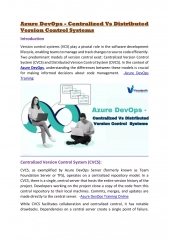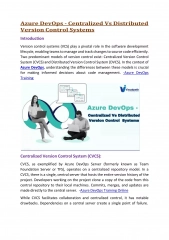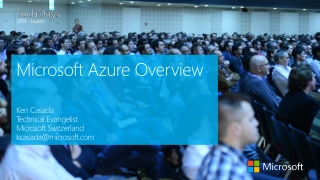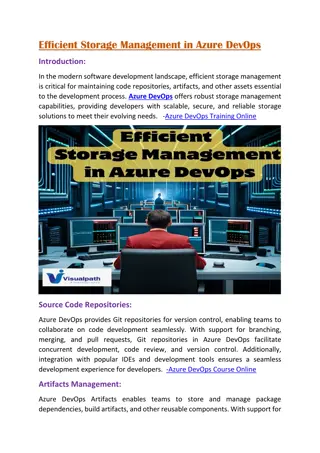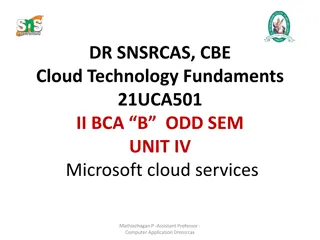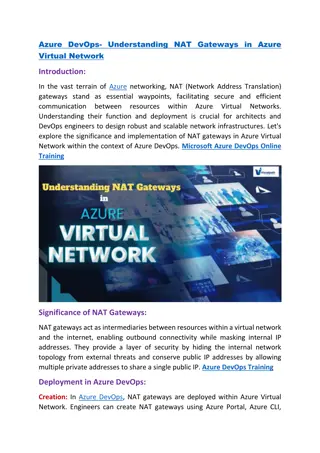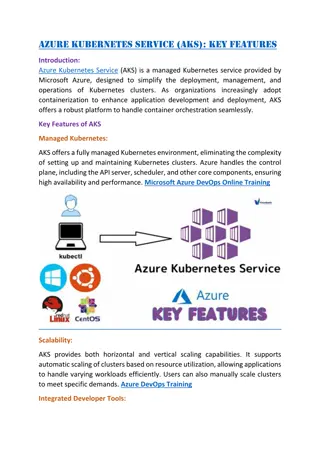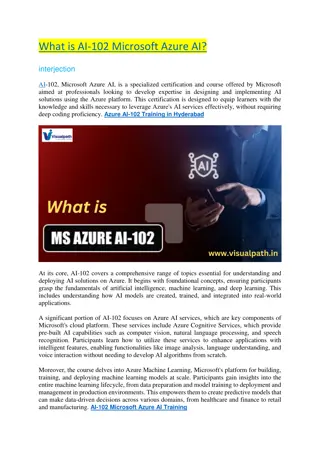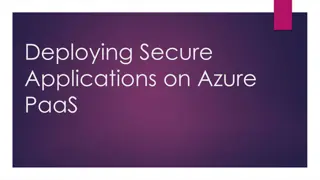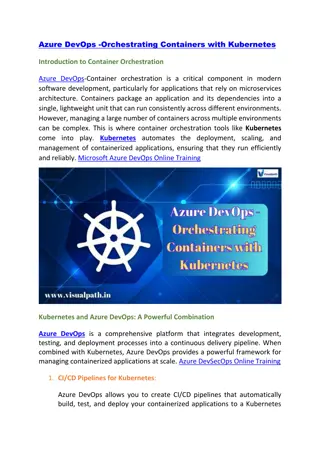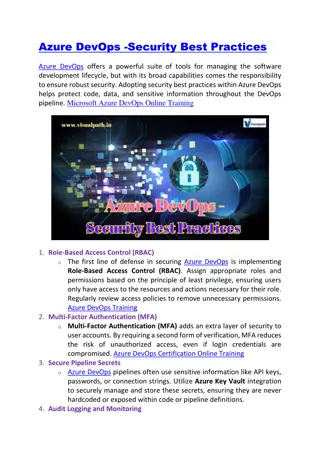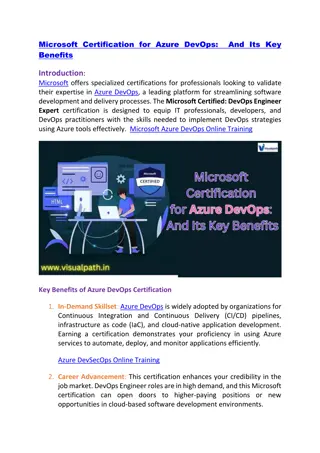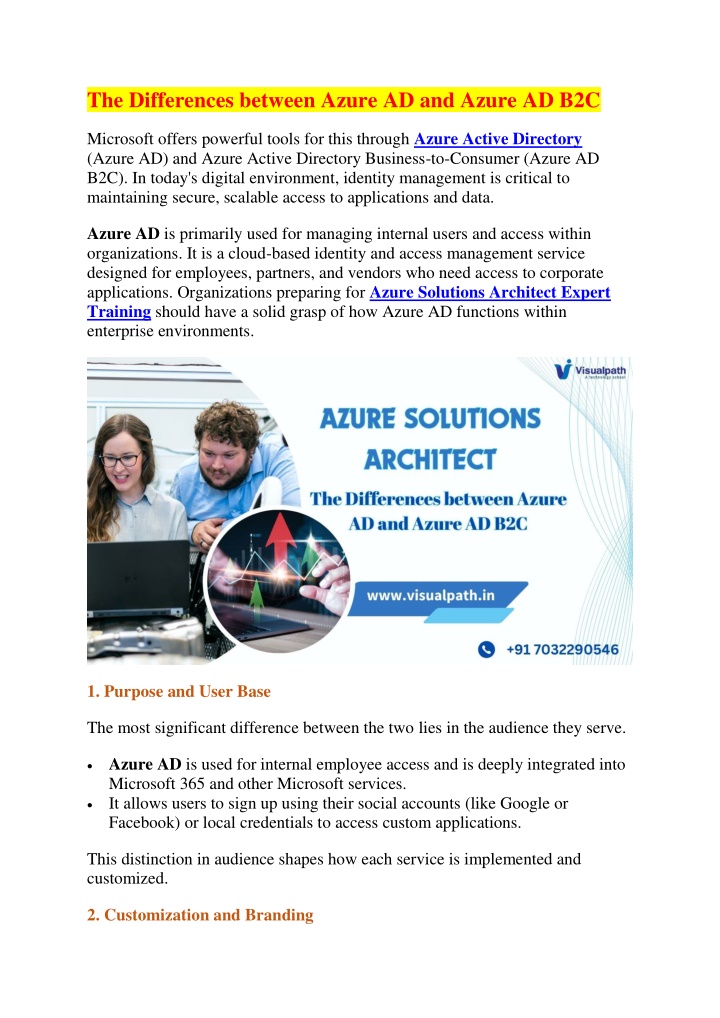
Azure Solutions Architect Certification Training | AZ-305
Kickstart your cloud career with VisualPathu2019s Azure Solutions Architect Certification Training. Our AZ-305 Training includes expert-led sessions, hands-on labs, real-time projects, and lifetime access to recordings. Learn from industry leaders w
Download Presentation

Please find below an Image/Link to download the presentation.
The content on the website is provided AS IS for your information and personal use only. It may not be sold, licensed, or shared on other websites without obtaining consent from the author. If you encounter any issues during the download, it is possible that the publisher has removed the file from their server.
You are allowed to download the files provided on this website for personal or commercial use, subject to the condition that they are used lawfully. All files are the property of their respective owners.
The content on the website is provided AS IS for your information and personal use only. It may not be sold, licensed, or shared on other websites without obtaining consent from the author.
E N D
Presentation Transcript
The Differences between Azure AD and Azure AD B2C Microsoft offers powerful tools for this through Azure Active Directory (Azure AD) and Azure Active Directory Business-to-Consumer (Azure AD B2C). In today's digital environment, identity management is critical to maintaining secure, scalable access to applications and data. Azure AD is primarily used for managing internal users and access within organizations. It is a cloud-based identity and access management service designed for employees, partners, and vendors who need access to corporate applications. Organizations preparing for Azure Solutions Architect Expert Training should have a solid grasp of how Azure AD functions within enterprise environments. 1. Purpose and User Base The most significant difference between the two lies in the audience they serve. Azure AD is used for internal employee access and is deeply integrated into Microsoft 365 and other Microsoft services. It allows users to sign up using their social accounts (like Google or Facebook) or local credentials to access custom applications. This distinction in audience shapes how each service is implemented and customized. 2. Customization and Branding
Another important difference is in how each service allows customization. Azure AD provides limited UI customization options because it's focused on enterprise users where branding is less critical. Azure AD B2C offers extensive customization features, enabling organizations to fully brand login experiences for their customers. These branding features are essential for customer-facing apps where user experience matters greatly. 3. Protocol Support and Integration Both services support standard authentication protocols like OAuth2, OpenID Connect, and SAML. However, Azure AD B2C has broader support for integrating social identity providers. For instance, Azure AD is commonly used with Microsoft services, while B2C can easily integrate with Twitter, LinkedIn, and local accounts, making it ideal for public applications. Understanding this flexibility is key for professionals enrolled in Microsoft Azure Solutions Architect Training, especially when designing secure and user-friendly access strategies. 4. Multi-Tenancy and Licensing Licensing models and tenancy also differ between the two: Azure AD B2C has a different pricing model based on the number of authentications and users, which is more suited for consumer-focused applications. Additionally, Azure AD operates under a single organizational tenant, while Azure AD B2C is tenant-specific for application-level customization. 5. Application Scenarios Here's a breakdown of when to use each: Use Azure AD when you want to control employee access to Microsoft 365, Azure resources, or internal applications. Use Azure AD B2C when developing applications or services meant for external users or customers who require a seamless and branded authentication experience.
This clear separation helps organizations structure their identity and access solutions properly. 6. Security and Compliance Both platforms offer robust security features, including MFA (Multi-Factor Authentication), conditional access, and identity protection. However, the scope and implementation may vary based on the type of user and application. Enterprises aiming to master AZ-305 Training must understand how to balance security, compliance, and user experience in both Azure AD and Azure AD B2C architectures Conclusion: Understanding the differences between Azure AD and Azure AD B2C is vital for architects and IT leaders. Whether you're designing for internal collaboration or external engagement, selecting the correct identity management platform ensures a secure and scalable solution. For those pursuing a cloud certification path, these identity services are core topics in Azure Solutions Architect Expert Training. Real-world design scenarios and architecture decisions often hinge on understanding these identity services' subtle yet impactful differences. Trending courses: AI Security, Azure Data Engineering, SAP PaPM Visualpath stands out as the best online software training institute in Hyderabad. For More Information abouttheAzure Solution Architect Training Online Contact Call/WhatsApp: +91-7032290546 Visit:https://www.visualpath.in/az-305-microsoft-azure-solutions-architect- training.html



